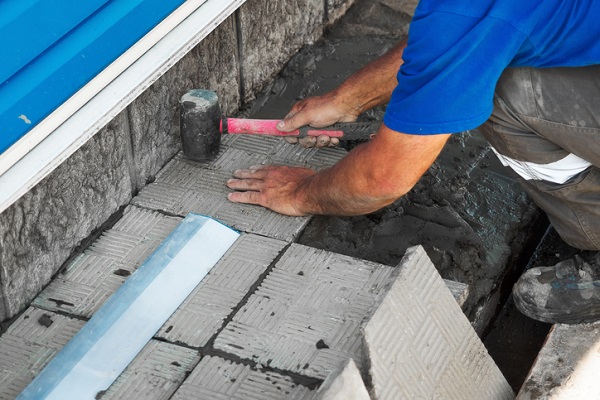Geopolymer and alkali-activated binder concrete: A new Standard in sustainable construction practices

Standards Australia has responded to industry calls to provide requirements and guidance for the design and construction of geopolymer concrete (GPC) and alkali-activated binder concrete (AABC) building structures and members that contain reinforcing steel or tendons, or both, with the publication of the Technical Specification Document SA TS 199:2023, Design of geopolymer and alkali-activated binder concrete structures.
SA TS 199 is a normative document that was produced with the aim that it would be included in future revisions of AS 3600. It was drafted by the Standards Australia Committee BD-002 sub-committee, BD-002-09, Geopolymer and Alternative Binders.
This document intends to outline new requirements for the design and construction of GPC and AABC, highlighting the advantages of its properties, which may make it a suitable alternative to traditional ordinary Portland Cement (OPC) — especially for its potential cost-effectiveness and sustainability.
GPC and AABC differ from traditional OPC, primarily in the type of binder used. GPC and AABC are produced by reacting aluminosilicate materials, such as fly ash or blast furnace slag, with an alkali activator, resulting in the formation of an alkali aluminosilicate gel (for low calcium binders) or a combination of aluminosilicate gel and calcium silicate hydrate (when there is sufficient calcium in the binder).
In contrast, OPC and traditional blended cement are made by hydrating calcium silicate to form calcium silicate hydrate gel. The reaction products in GPC and AABC are therefore significantly different from those in OPC or traditional blended cement. This fundamental difference in chemical composition contributes to the unique properties and benefits of GPC and AABC over traditional OPC.
Through the introduction of SA TS 199, Standards Australia hopes to increase the uptake of GPC and AABC in construction by increasing awareness on its use within the engineering community and developing and maintaining standards to support use of this material.
Using GPC and AABC instead of OPC offers several advantages, with sustainability being a core property. The increased uptake of GPC and AABC in the construction industry can contribute to reducing carbon emissions, making it a more sustainable option.
Furthermore, these materials use fly-ash, a waste by-product of coal combustion that would otherwise end up in landfill. Emerging research and academic papers indicate that the carbon footprint of their production is also up to 90 per cent lower than that of OPC.
GPC and AABC are also highly versatile materials with durability that extends to high heat and cold environments, as well as resistance to chemical degradation, even in harsh surroundings such as marine environments.
These qualities make them ideal for infrastructure work such as roads, bridges, and drainage pipes, as well as buildings, including in-situ and precast applications.
In terms of structural elements that may be subject to external restraint, GPC and AABC are strong contenders to replace OPC. They have low shrinkage and heat of hydration and high tensile strength, making them an ideal alternative. They are also easy to batch using traditional concrete batching facilities.
In addition to the environmental and performance benefits, emerging research and academic papers indicate that the potential of cost savings for the consumer, industry, and manufacturer, particularly where carbon taxes apply, adds to the appeal.
GPC and AABC have already been used in the construction industry due to their remarkable capabilities, including several large-scale projects across Australia.
One of the most noteworthy projects is the Wellcamp Airport in Toowoomba, Queensland, which is the first greenfield airport built in Australia in more than five decades and the largest modern GPC project in the world. The use of GPC in this project saved about 6,600 tonnes in CO2 emissions.
GPC has also been used in two pedestrian bridges in Cowies Creek at Deppeler Park in Geelong, Victoria, to support a project brief that stipulated using materials with a low carbon footprint. These bridges are a testament to the remarkable properties of GPC, including its sustainability and resistance to chemicals. Not only is it a low-carbon product, but it can also withstand the impacts of acidic soils and has a design life of 100 years, with minimal maintenance required, meeting the requirements of the project brief.
These projects demonstrate the immense potential of GPC and AABC in transforming the construction industry and building a more sustainable future. It also showcases how their unique properties offer a sustainable and durable alternative to traditional OPC.
The document provides guidance aimed at addressing several key issues and design considerations associated with the use of GPC and AABC including:
- Design for strength and serviceability
GPC and AABC structures shall be designed for strength and serviceability limit states as set out in AS/NZS 1170.0 and AS 3600. - Design for earthquake actions
Structures designed for earthquake actions should be designed as set out in AS 1170.4 and AS 3600. - Design for robustness
Structures shall be designed according to guidelines set out in Section 6 of AS/NZS 1170.0:2002. - Design for durability and fire resistance
Requirements and recommendations for the design of GPC and AABC structures should be updated for durability and fire resistance. - Design for strength
Strength checks for GPC and AABC structures and their component members may be undertaken using the procedures specified in AS 3600:2018 Clause 2.2.2 to 2.2.6, and methods of structural analysis specified in Section 6 of AS 3600:2018, as appropriate. - Design for serviceability
Serviceability checks for GPC and AABC structures and their component members may be undertaken using the procedures specified in AS 3600:2018 Clauses 2.3 and its sub-clauses for all relevant service conditions, to help ensure that the structure would perform to its designed function and purpose.
